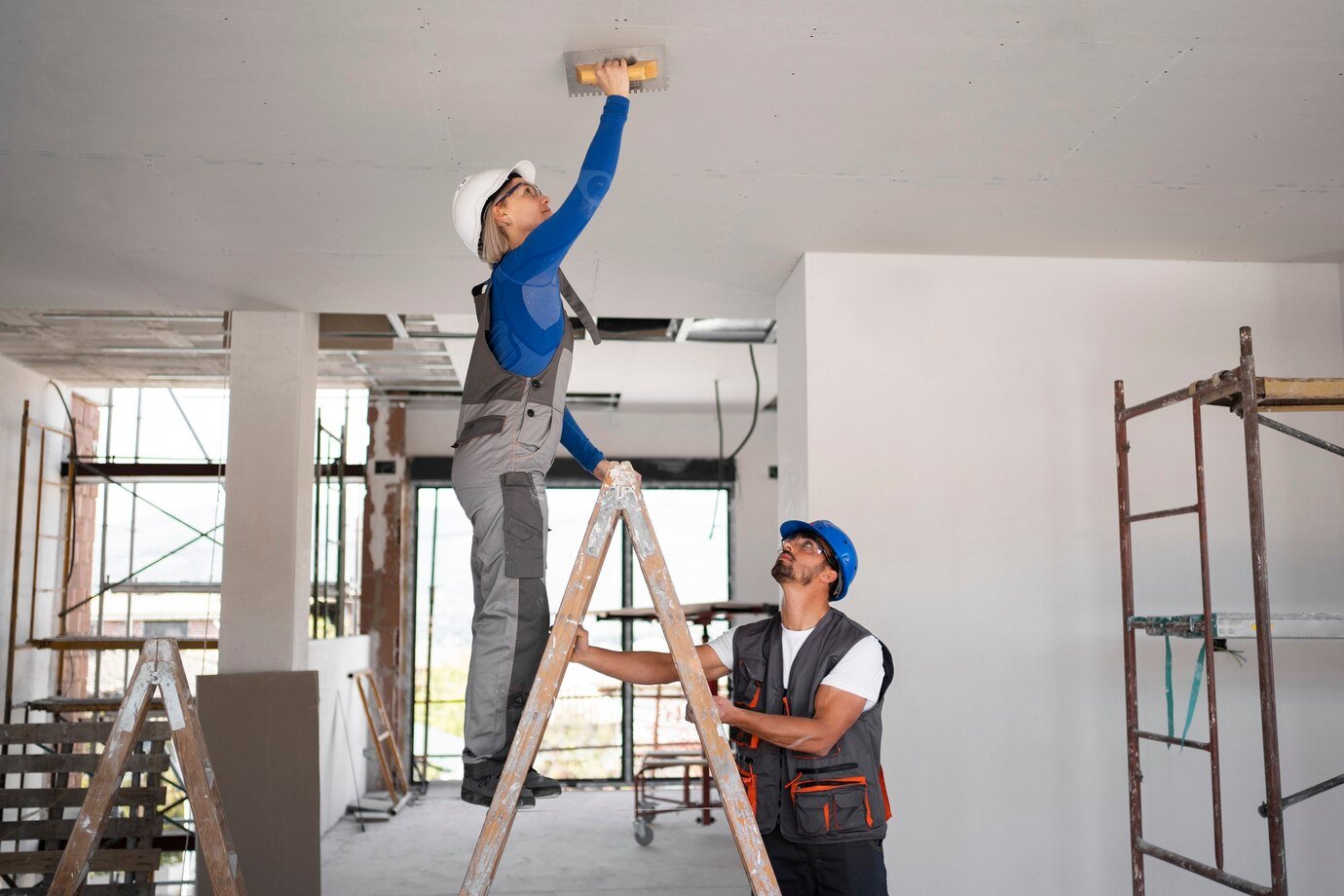PLASTERING LEVEL 3
About this course
Module 1: Advanced Plastering Techniques
Learning Objectives:
Master complex plastering applications.
Develop precision in finishing and detailing.
Understand advanced mixing ratios and material selection.
Topics Covered:
Skim coating to a high standard
Ornamental plastering (mouldings, cornicing, arches)
Specialist finishes (polished, textured, Venetian plaster)
Troubleshooting common defects
Module 2: External Rendering & Waterproofing
Learning Objectives:
Apply and finish external render systems.
Understand waterproofing techniques for damp-proof surfaces.
Topics Covered:
Traditional sand/cement rendering
Modern polymer-modified renders
Silicone and acrylic finishes
Dealing with efflorescence and cracking
Module 3: Complex Surface Preparation & Repair
Learning Objectives:
Restore and repair historical or damaged surfaces.
Assess and prepare substrates for plastering.
Topics Covered:
Repairing lath and plaster ceilings/walls
Patching and blending old plasterwork
Dealing with structural movement cracks
Use of bonding agents and reinforcement meshes
Module 4: Fireproof & Acoustic Plastering
Learning Objectives:
Apply fire-resistant and soundproofing plaster systems.
Understand building regulations for fireproofing.
Topics Covered:
Vermiculite and gypsum-based fireproof plaster
Acoustic plasterboard installation
Spray-applied fireproof coatings
Module 5: Running Moulds & Fibrous Plasterwork
Learning Objectives:
Create decorative plaster elements using moulds.
Work with fibrous plaster for bespoke designs.
Topics Covered:
Making and using running moulds
Casting decorative plaster features (ceiling roses, columns)
Reinforcing with hessian and jute scrim
Module 6: Project Management & Client Relations
Learning Objectives:
Manage plastering projects efficiently.
Communicate effectively with clients and contractors.
Topics Covered:
Estimating materials and costs
Time management for large-scale projects
Handling client expectations and feedback
Module 7: Health, Safety & Industry Standards
Learning Objectives:
Comply with health and safety regulations.
Understand COSHH and working at heights.
Topics Covered:
Risk assessments for plastering jobs
Safe handling of silica dust and chemicals
PPE and scaffold safety
Assessment & Certification
Practical Assessments:
Complex plastering task (e.g., ornamental ceiling repair)
External rendering sample panel
Theory Exam:
Multiple-choice and short-answer questions on techniques and safety
Final Project:
Complete a full plastering project from prep to finish
This course would be ideal for plasterers looking to specialize in high-end finishes, restoration work, or commercial projects.
Comments (0)
Advanced plastering techniques include specialized finishes like textured surfaces, pebble dash, and rough cast, along with techniques like skimming and airless plastering. These techniques enhance the aesthetic and functional qualities of plastered walls and ceilings.
External rendering involves applying a protective coating to a building's walls, which can include waterproofing elements. This process can be done in conjunction with other waterproofing methods to enhance protection against water penetration. Waterproofing can be achieved through various methods, including applying waterproof render mixes or using specialized water-repellent impregnations.
Complex surface preparation and repair involves a multi-step process to ensure a durable and long-lasting outcome. It includes assessing the surface condition, removing contaminants and coatings, restoring imperfections, creating an appropriate surface profile, and drying the surface before applying a new coating or repair. Specific techniques like abrasive blasting, chemical cleaning, and specialized tools may be needed depending on the surface material and the nature of the damage.
Acoustic plaster is plaster which contains fibres or aggregate so that it absorbs sound. Early plasters contained asbestos, but newer ones consist of a base layer of absorptive substrate panels, which are typically mineral wool, or a non-combustible inorganic blow-glass granulate.
Running moulds are a traditional plastering technique used to create decorative cornices and other mouldings by running a metal mould along a surface while plaster is applied. Fibrous plasterwork, on the other hand, involves casting plaster in a mould, often using hessian or jute scrimcloth for reinforcement, to create decorative elements like cornices and architectural details.
Project management and client relations are intertwined, with effective communication and understanding of client needs being crucial for project success and strong client relationships. Client project management involves managing client communications, expectations, and deliverables while also overseeing the internal work to meet client goals. This requires a blend of project management skills, such as planning, scheduling, and resource allocation, with strong interpersonal and communication skills to build rapport and maintain trust with clients.
Health and safety standards in various industries are crucial for creating safe and healthy workplaces, protecting employees from hazards, and ensuring compliance with regulations. These standards cover a wide range of topics, from managing risks and implementing control measures to providing necessary resources like personal protective equipment (PPE). A key standard in this area is ISO 45001, which provides a framework for managing occupational health and safety risks.
Quiz & Certificates





